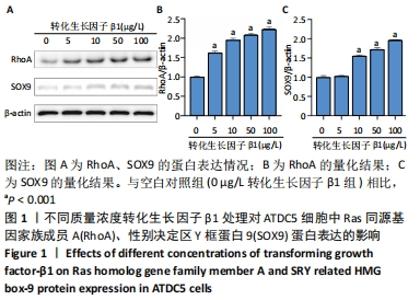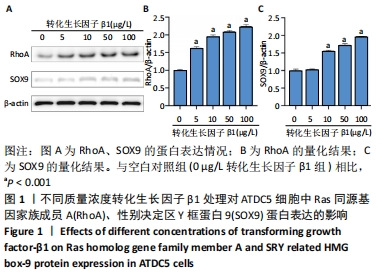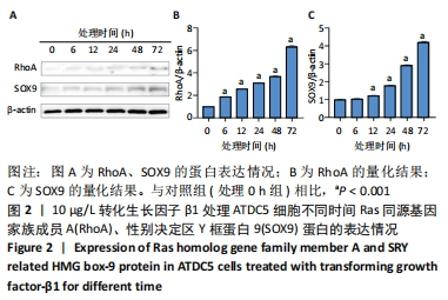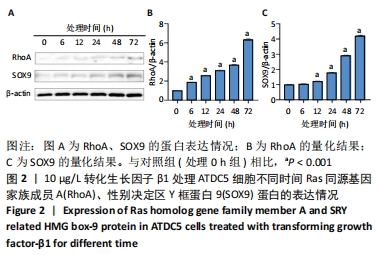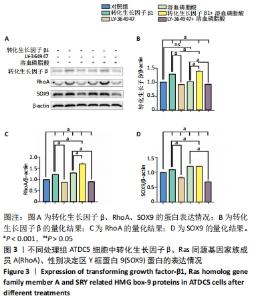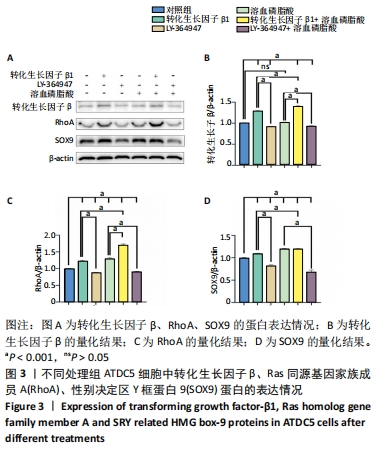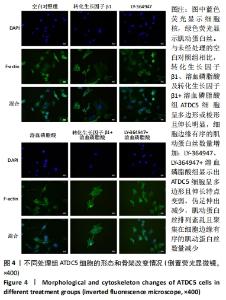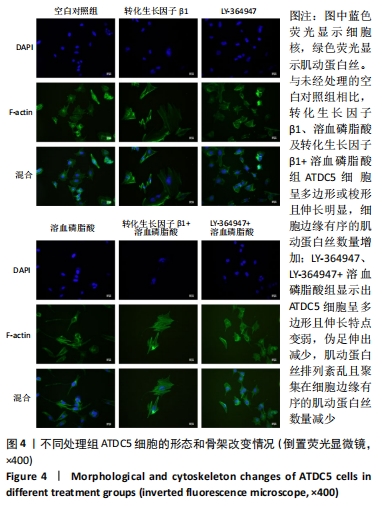[1] 国家老年疾病临床医学研究中心(湘雅医院),中华医学会骨科学分会关节外科学组.中国髌股关节骨关节炎诊疗指南(2020年版)[J].中华骨科杂志,2020,40(18):1227-1234.
[2] HINMAN RS, ALLEN KD, BENNELL KL, et al. Development of a core capability framework for qualified health professionals to optimise care for people with osteoarthritis: an OARSI initiative. Osteoarthritis Cartilage. 2020;28(2):154-166.
[3] 中华医学会骨科学分会关节外科学组.骨关节炎诊疗指南(2018年版)[J].中华骨科杂志,2018,38(12):705-715.
[4] ZHENG L, PI C, ZHANG J, et al. Aberrant activation of latent transforming growth factor-β initiates the onset of temporomandibular joint osteoarthritis. Bone Res. 2018;6(4):383-392.
[5] 姚力偀,唐洁,郑洁,等.血清相关炎症因子表达水平与老年膝关节骨性关节炎病情严重程度的相关性[J].西部医学,2021,33(1): 144-147.
[6] QI Y, LIANG X, DAI F, et al. RhoA/ROCK Pathway Activation is Regulated by AT1 Receptor and Participates in Smooth Muscle Migration and Dedifferentiation via Promoting Actin Cytoskeleton Polymerization. Int J Mol Sci. 2020;21(15):5398.
[7] DENG Z, JIA Y, LIU H, et al. RhoA/ROCK pathway: implication in osteoarthritis and therapeutic targets. Am J Transl Res. 2019;11(9): 5324-5331.
[8] SHI W, XU C, GONG Y, et al. RhoA/ROCK activation represents a new mechanism for inactivating Wnt/β-catenin signaling in the aging-associated bone loss. Cell Regen. 2021;10(1):8.
[9] MA Q, ZHANG T, ZUO W, et al. Regeneration of functional alveoli by adult human SOX9+ airway basal cell transplantation. Prot Cell. 2018; 9(003):267-282.
[10] LIANG B , MAMIDI MK , SAMSA WE , et al. Targeted and sustained Sox9 expression in mouse hypertrophic chondrocytes causes severe and spontaneous osteoarthritis by perturbing cartilage homeostasis. Am J Transl Res. 2020;12(3):1056-1069.
[11] TANG Y, XIAO J, WANG Y, et al. Effect of adenovirus-mediated TGF-β1 gene transfer on the function of rabbit articular chondrocytes. J Orthop Sci. 2016;22(1):149-155.
[12] XU T, WU M, FENG J, et al. RhoA/Rho kinase signaling regulates transforming growth factor-β1-induced chondrogenesis and actin organization of synovium-derived mesenchymal stem cells through interaction with the Smad pathway. Int J Mol Med. 2012;30(5):1119-1125.
[13] WILHELM D, KEMPF H, BIANCHI A, et al. ATDC5 cells as a model of cartilage extracellular matrix neosynthesis, maturation and assembly. J Proteomics. 2020;219:103718.
[14] JIN X , ANTONY B , WANG X , et al. Protocol: Effect of vitamin D supplementation on pain and physical function in patients with knee osteoarthritis (OA): an OA Trial Bank protocol for a systematic review and individual patient data (IPD) meta-analysis. BMJ Open. 2020;10(4): e035302.
[15] 张晋宁, 杨天翔, 张博文,等. 转化生长因子-β信号转导通路与骨关节炎[J]. 国际骨科学杂志,2021,42(2):97-101.
[16] 魏建仝,王雄,苏秦柳晔,等.TGFβ与骨关节炎相关性的荟萃分析[J].中国矫形外科杂志,2017,25(23):2152-2155.
[17] ZHEN G, CAO X. Targeting TGFβ signaling in subchondral bone and articular cartilage homeostasis. Trends Pharmacol Sci. 2014;35(5):227-236.
[18] WU X , KONDRAGUNTA V , KORNMAN KS , et al. IL-1 receptor antagonist gene as a predictive biomarker of progression of knee osteoarthritis in a population cohort. Osteoarthritis Cartilage. 2013;21(7):930-938.
[19] BERENBAUM F. Osteoarthritis as an inflammatory disease (osteoarthritis is not osteoarthrosis). Osteoarthritis Cartilage. 2013;21(1):16-21.
[20] BLANEY DAVIDSON EN, VAN DER KRAAN PM, VAN DEN BERG WB. TGF-beta and osteoarthritis. Osteoarthritis Cartilage. 2007;15(6):597-604.
[21] ZHANG P , ZHONG ZH , YU HT , et al. Exogenous expression of IL-1Ra and TGF-β1 promotes in vivo repair in experimental rabbit osteoarthritis. Scand J Rheumatol. 2015;44(5):1-8.
[22] HAN F, GILBERT JR, HARRISON G, et al. Transforming Growth Factor β1 regulates fibronectin isoform expression and splicing factor SRp40 expression during ATDC5 chondrogenic maturation. Exp Cell Res. 2007; 313(8):1518-1532.
[23] YASUDA H, OH CD, CHEN D, et al. A Novel Regulatory Mechanism of Type II Collagen Expression via a SOX9-Dependent Enhancer in Intron 6. J Biol Chem. 2017;292(2):528-538.
[24] MEAD TJ, QIUQING W, PALLAVI B, et al. A far-upstream (70 kb) enhancer mediates Sox9 auto-regulation in somatic tissues during development and adult regeneration. Nuclc Acids Res. 2013;(8):4459.
[25] 叶国平.电针膝眼穴调控RhoA/ROCK信号通路抑制膝骨性关节炎软骨退变的机制研究[D]. 福州:福建中医药大学,2019.
[26] LIANG J, FENG J, WU WK, et al. Leptin-mediated cytoskeletal remodeling in chondrocytes occurs via the RhoA/ROCK pathway. J Orthop Res. 2011; 29(3):369-374.
[27] WOODS A, BEIER F. RhoA/ROCK Signaling Regulates Chondrogenesis in a Context-dependent Manner. J Biol Chem. 2006;281(19):13134-13140.
[28] FUJIWARA S , OHASHI K , MASHIKO T , et al. Interplay between Solo and keratin filaments is crucial for mechanical force–induced stress fiber reinforcement. Mol Biol Cell. 2016;27(6):954-966.
|
